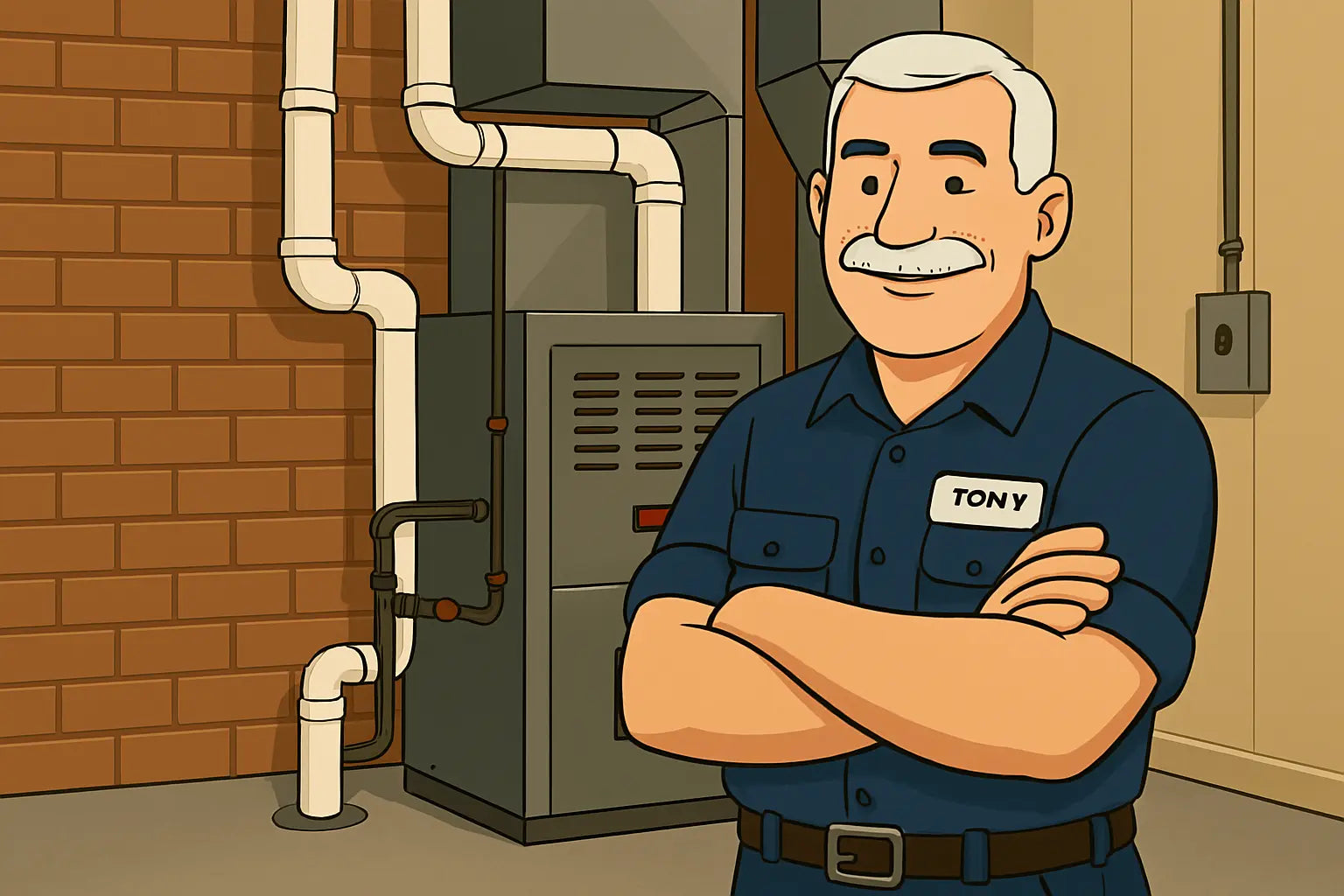🛠️ Hey There from Tony
Alright, listen up. If you’re standing in front of a brand-new furnace or one that’s spitting out cold air and making noises like a coffee grinder full of nails—don’t panic. I’ve installed more furnaces than I can count and fixed even more. Whether you're eyeing a Goodman, MrCool, WeatherKing, or any other brand from The Furnace Outlet, this blog’s gonna walk you through the guts of installation and troubleshooting like we’re on the job together. Grab your flashlight and a little patience—let’s get to work 🔧🔥.
1. Choosing the Right Furnace for Your Home 🏠
Installing a furnace starts before you even open the box. You’ve gotta choose the right size and fuel type—natural gas, propane, or electric—and match it to your home’s layout and square footage.
Most folks don’t realize that oversizing your furnace is just as bad as undersizing it. You’ll short-cycle the unit, burn through components, and see sky-high utility bills. Use a Manual J Load Calculation or work with a pro to size it right. Tools like CoolCalc’s Manual J Calculator can help, but nothing beats an on-site inspection.
Want a cheat sheet for BTU sizing? Check out this Energy.gov furnace sizing guide.
2. Prepping for Installation 🔧
Before you install, check:
-
You’ve got the correct clearances per the installation manual
-
The gas line is properly sized and routed
-
Electrical lines are grounded, fused, and safely terminated
-
The ventilation system matches the furnace type (80% vs. 95%+ AFUE)
I’ve seen people skip the condensate drain setup on high-efficiency furnaces—and boom, they’ve got water damage in their basement a week later. Don’t be that guy. This checklist from HVAC School is worth taping to your wall.
3. The Basics of Wiring a Furnace Safely ⚡
This is where DIY’ers get nervous—and rightly so. Furnace wiring involves:
-
A 24V control system (thermostat, limit switches, and relays)
-
120V–240V power supply for the blower and igniter
-
A dedicated disconnect box (code in most jurisdictions)
If you’re working on this yourself, shut off power at the breaker, test with a multimeter, and double-check against the wiring diagram in the furnace’s access panel. If you see anything you don’t understand, don’t wing it—call a licensed electrician or HVAC tech.
Need a crash course? Family Handyman’s furnace wiring basics explains it with clear visuals.
4. Common Furnace Installation Mistakes I See Weekly 😬
Let me give you a rundown of the greatest hits:
-
Wrong direction on airflow: I once saw a guy install a furnace backward. Yep.
-
Skipping combustion air intake for sealed combustion units—starving the furnace.
-
Flex ducting that's 30% longer than it needs to be, killing airflow.
-
Improper flue pitch, causing backdrafts and tripping pressure switches.
Want a deep dive into airflow mistakes? HVAC.com explains airflow design and balancing with good illustrations.
5. Troubleshooting: When It Won’t Fire Up 💨
So you installed it, flipped the breaker, and… nothing? Or maybe the blower kicks on but no heat? Here’s my usual checklist:
-
Check the thermostat (is it set to “heat” and above room temp?)
-
Inspect the drain line (clogged drains shut the whole system down)
-
Look at the LED flash code on the control board—match it to the legend on the panel
-
Verify pressure switch and rollout sensors with a multimeter
-
Test the flame sensor—clean it if it's dirty with fine steel wool
Carrier’s official troubleshooting guide is solid even if you’ve got another brand. Most issues are shared across models.
6. When to Call It Quits and Bring in a Pro ☎️
If you smell gas, hear loud bangs, or get an error code that points to the integrated furnace control board (IFC)—it’s time to phone a pro. Same goes for flue gas issues, cracked heat exchangers, or strange carbon monoxide readings (make sure you’ve got a CO detector in the same room as the furnace!).
🧰 Tony’s Toolbox Picks
Here’s what I keep in my truck for furnace installs and repairs:
-
Multimeter with temperature probe
-
Manometer for gas pressure checks
-
Wet/dry vac for condensate drains
-
Flexible inspection camera
-
Digital inclinometer (for leveling burners and flues)
You don’t need the fanciest gear—but don’t cheap out on safety-rated tools either.
🙌 Goodbye from Tony
Well there you have it. You’ve got the knowledge to handle a furnace install or troubleshoot a stubborn system like a real pro. But remember: there’s no shame in calling a technician if things get over your head. I’ve been in crawlspaces with 8-foot snakes, furnaces filled with mouse nests, and blowers that launched more dust than a leaf blower on a dirt road. This work ain’t always clean, but it’s worth doing right.
Check out The Furnace Outlet’s full line of systems—they’ve got great prices, fast shipping, and models built to last. Stay warm out there! 🧤🔥
Need to know what to do when your furnace wont turn off after installation? Visit my guide: The Top 7 Fixes That Actually Work.
Until next time,
- Tony the Trusted Tech







